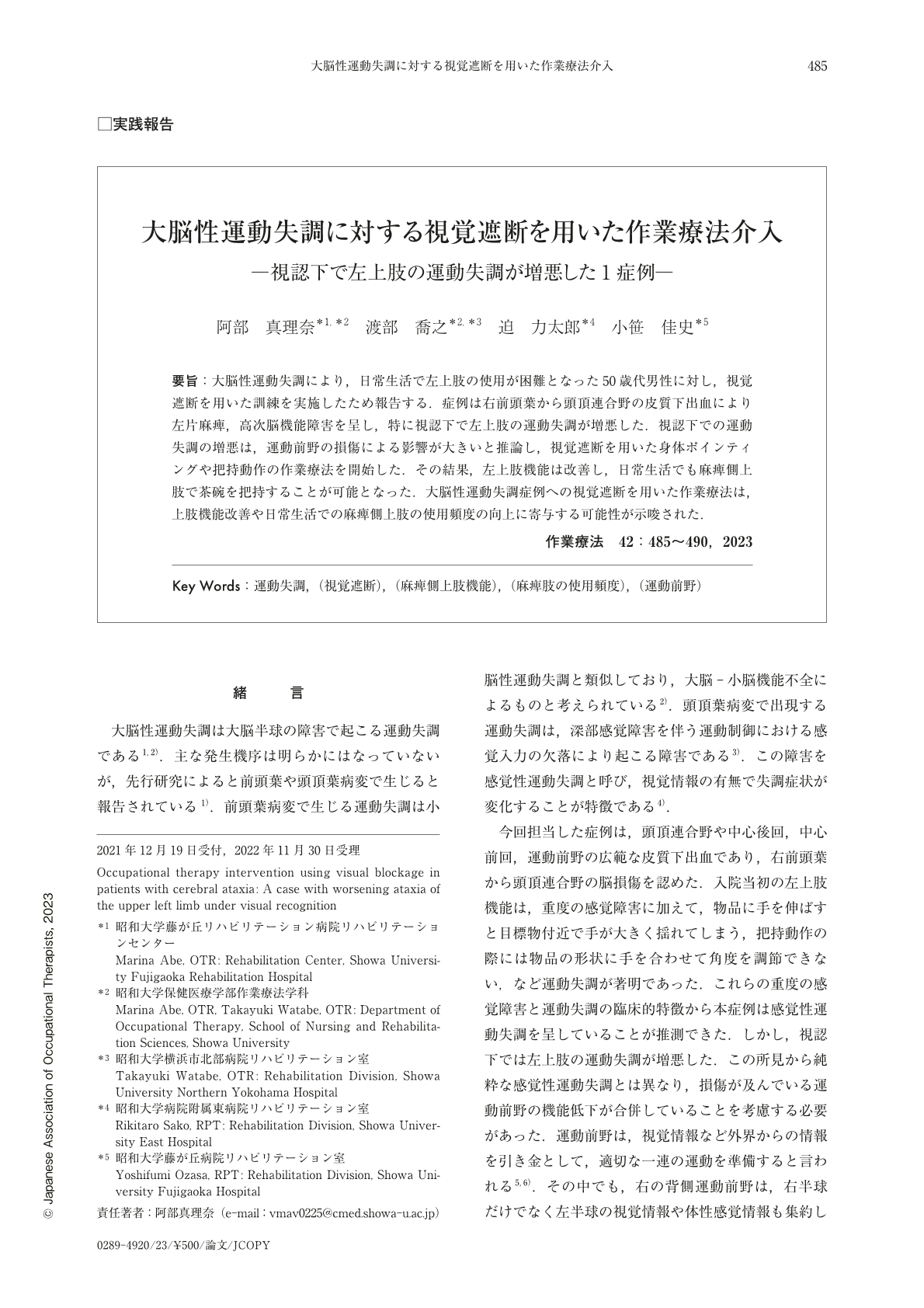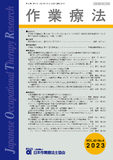Japanese
English
- 販売していません
- Abstract 文献概要
- 1ページ目 Look Inside
- 参考文献 Reference
要旨:大脳性運動失調により,日常生活で左上肢の使用が困難となった50歳代男性に対し,視覚遮断を用いた訓練を実施したため報告する.症例は右前頭葉から頭頂連合野の皮質下出血により左片麻痺,高次脳機能障害を呈し,特に視認下で左上肢の運動失調が増悪した.視認下での運動失調の増悪は,運動前野の損傷による影響が大きいと推論し,視覚遮断を用いた身体ポインティングや把持動作の作業療法を開始した.その結果,左上肢機能は改善し,日常生活でも麻痺側上肢で茶碗を把持することが可能となった.大脳性運動失調症例への視覚遮断を用いた作業療法は,上肢機能改善や日常生活での麻痺側上肢の使用頻度の向上に寄与する可能性が示唆された.
We report a case of cerebral ataxia with worsening ataxia of the upper left limb under visual recognition. The patient was a man in his 50s with left hemiplegia and higher brain dysfunction due to subcortical hemorrhage in the right frontal to the parietal association cortex. It was difficult to use the paralyzed upper limb in daily life due to worsening of the upper left limb ataxia under visual recognition. The exacerbation of ataxia under visual recognition may have been largely influenced by the damaged premotor cortex. Therefore, we intervened with occupational therapy for body pointing and gripping movements using visual blockage. As a result, the upper left limb function improved, and the patient was able to grasp a rice bowl with the paralyzed upper limb in daily life. The results suggest that occupational therapy intervention using visual blockage in patients with cerebral ataxia may contribute to both improving the upper limb function and increasing the frequency of use of the paralyzed upper limb in daily life.

Copyright © 2023, Japanese Association of Occupational Therapists. All rights reserved.


